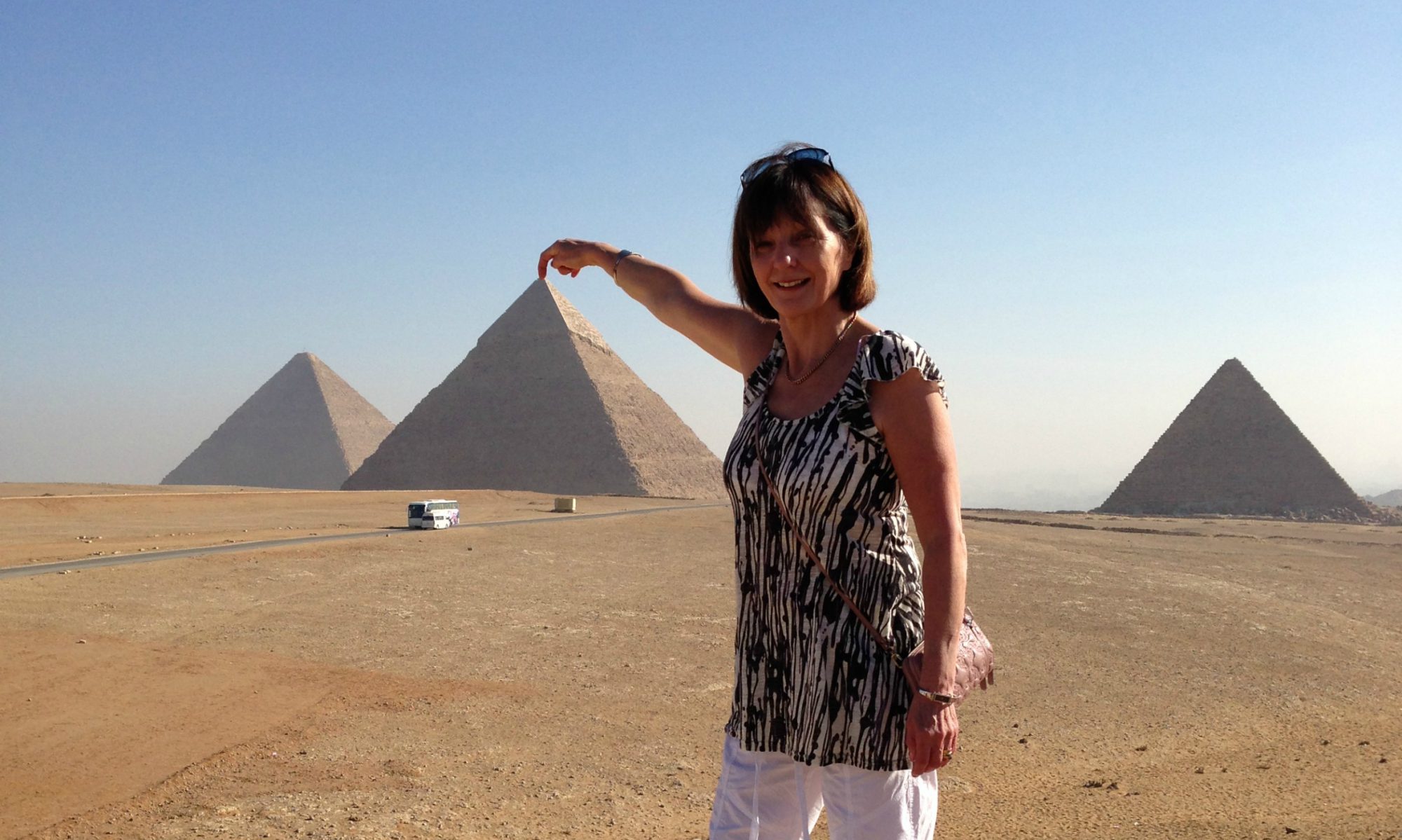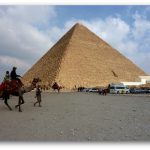This is a recent article from the Adelaide Now website
A STONE’S throw from Africa, on the banks of the mighty Nile, is Aswan, an Egyptian jewel, sun-baked, yet enjoying the lush advantages of life on the water’s edge, writes JESSICA HURT.
It starts out of nowhere, a sweet humming noise, which slowly builds to a powerful crescendo. Dressed in the traditional, long, dress-like costume of the region, the musician beats his hand on the side of a small hand-held drum as he sings. Oh la lei li – he repeats it, and we are invited to sing it back to him, each time louder than the first.
Such a simple, but powerful tune. One by one, we get up and move our hips to the beat of the drum, oblivious to our surroundings. The beautiful voice echoes around us, it bounces off the rugged desert dunes flanked by palm trees and reaches out across the powerful waters. All the while, our felucca, or traditional Egyptian sail boat, moves effortlessly along the mighty river, as other boats have done for centuries before.
As the music dies down and the dancing stops, we get lost in private thoughts, humbled by the history of this powerful waterway – the majestic Nile.
The Nile, meaning “river valley” in ancient Egyptian, has been the lifeline for this country’s people for centuries.
It was by these banks that one of the oldest civilisations in the world began. The ancient Egyptians lived and farmed along the banks of the river, its soil used to produce food for themselves and their livestock, its fish caught for meals and its flowing waters used for transportation and trade. The longest river in the world, it weaves its way through nine countries, starting with the White Nile in Rwanda and the Blue Nile in Ethiopia and 6695km later ends in a large delta which empties into the Mediterranean Sea.
These days, the Nile does a roaring trade in tourism. Its waters are dotted with powerful cruisers and smaller feluccas packed with excited tourists.
Dozens of the cruisers line the banks, waiting for passengers who have headed off on daytrips, lured by far-flung temples and colourful, cultural icons.
Along with seeing the pyramids for the first time, cruising along the Nile is a memory which will stay with you a lifetime.
After the hustle and bustle of Cairo, three nights on a cruise ship plying the Nile is welcome relief.
Tourists stand on the top deck, binoculars never far from their hands, while others laze by the pool catching a few rays of sun, enjoying views of brilliant orange and yellow desert dunes from their deckchairs. At night, belly dancers come aboard to amuse us.
Later, when we are heading towards Luxor, the sun beginning to set, we see the magnificent Kom Ombo temple dominated by huge columns, right there on the nearby bank.
There is something surreal about disembarking from a cruise ship to step in front of a centuries-old temple.
In ancient times, sacred crocodiles would have basked in the afternoon sun in front of this dual temple of Sobek, the crocodile god, and Horus, the falcon-headed god.
Entrepreneurial locals have now set up stalls in front, to tempt the hordes of tourists.
We wander through the ruins, which date back to about 180BC, marvelling at the outer halls with huge columns and the well-preserved hieroglyphics.
Before the cruise, our journey began in the frenetic jungle of Cairo. On a 12-hour overnight journey, we were lulled to sleep by the train’s motion, clattering through the desert.
As darkness gives way to daylight, I get my first glimpse of the Nile and am spellbound.
I expect to see rolling hills of nothing but desert, but I’m in for a surprise. The banks are covered in lush, green vegetation and palm trees. Only beyond this is the searing desert. Amid the green pastures, there is the odd farmhouse. A donkey ambles along a path with a young boy perched on its back. Our Nile experience then begins in the busy market and tourist centre of Aswan, on the east bank. It is from here that 400 cruise ships transport thousands of tourists north along the Nile to Luxor every year.
Aswan, which means trade, may not have the prized pyramids but it has a little bit of everything that makes Egypt so unique.
It is a good base for exploring the many nearby temples, including the Temple of Philae, on a small island near Aswan.
We take a ferry ride to the site which was built for the goddess Isis about 2300 years ago. It was built on another island, but became submerged after the first Aswan dam was built in 1906. It was moved to its present location in the 1970s. We wander around the ruins, marvelling at the Roman pillars – tourists could be forgiven for thinking they had suddenly been transported to Rome.
On another day, we join a convoy of buses with a police escort – a soldier sitting up front with a machinegun. We make the three-hour journey to Abu Simbel, two temples close to the Sudan border, which were constructed during the 13th century.
Aswan was originally known as Swenet, a frontier town of ancient Egypt. Its quarries were celebrated for their stone, especially the granitic rock called syenite. Their stone was used in the colossal statues, obelisks and shrines which are found around Aswan and throughout Egypt today – including the pyramids. You can still see traces left by quarrymen in the area about 3000 years ago. Aswan also was known as a military station.
Like most Egyptian towns, Aswan life centres around the bustling bazaar. We arrive just before dinner, when the market comes to life.
There are more locals here than tourists. The women, covered head-to-toe, come to buy fruit and vegetables and choose from woven baskets with a huge selection of spices, from chilli to indigo. Stall owners cry out to the passing trade – enticing patrons with their crafty wares.
Kids roam free, playing, mothers with babies shop while men sit in coffee shops overlooking the markets, smoking sheesha (water pipes).
At a seafood restaurant, we get curious looks from the staff and customers as we join the locals for dinner. No alcohol is served here, but it is soon forgotten by our party when we are presented with plates full of fresh, succulent, grilled seafood for the equivalent of about $10.
Just south of town, high atop a granite hill, stands the imposing Old Cataract Hotel, where Agatha Christie penned famous murder mystery Death on the Nile. These days, tourists must pay just to enter the hotel. The Basma Aswan Hotel, farther up the hill, provides equally, if not more impressive river views, without the tourist fanfare.
The Old Cataract’s rooftop balcony panoramas are breathtaking. To the left is the pool where aqua water and the green deck suddenly give way to a lush break of vegetation between its edge and the Nile.
At the Basma hotel, for about $20 you can, like many before you, including this gullible author, buy a second-hand copy of Christie’s book to read as you cruise down the Nile.
On another day in Aswan, the Nile once again beckons and we take a motorised boat ride to a traditional village – home to the Nubian people.
We are joined by young boys who paddle to our vessel in makeshift boats, rousing us to song with sweet attempts at nursery rhymes.
From outside, most of the homes look like those in Greece, walls awash with baby-blue paint. Inside one home, the walls and carpets are adorned with colourful paintings.
There are about two million Nubian people in Egypt. They have their own traditions and customs, speak their own language as well as Arabic and they traditionally marry within their clan. Their livelihood – like Egyptians for centuries before them – is dependent on fishing and farming, from their lifeline, the Nile.
To book your own Nile cruise please call our FREEPHONE reservations number 0808 1089 100




